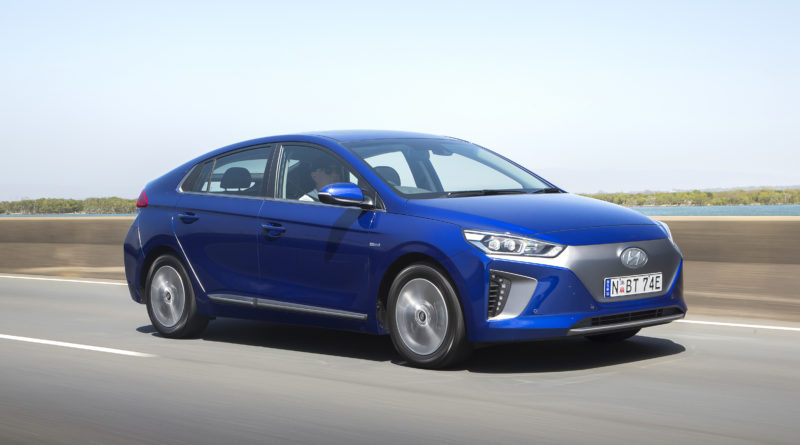Hyundai Ioniq Electric review
The Hyundai Ioniq is Australia’s most affordable electric car.
In a world of flash battery electric vehicles that look like spaceships and cost almost as much, the five-door hatchback Hyundai Ioniq Electric stands out as, well, pretty boring and almost affordable.
Hey, not everyone can be the star of the show.
Value
OK, the top-spec Ioniq Premium we’re looking at here retails for $48,990 plus dealer and on-road costs – so more than $50,000 by the time it rolls quietly on to the road. Not at all cheap by internal combustion standards, but pretty good for a pure EV, or BEV.
In fact, there is a cheaper Ioniq Electric Elite for $44,990 plus ORCs and that really is as cheap as a new BEV gets in Australia in 2019.
The drivetrains are the same (see below) and the equipment the two models share includes, satellite-navigation, Apple CarPlay and Android Auto compatibility and single-zone climate control.
But the Premium adds an electric park brake, 17-inch alloys, one-touch power front windows, a powered sunroof, leather appointed seats, ventilated and heated front seats, a powered driver’s seat, paddle shifters, wireless charging and rain sensing wipers.
The Ioniq Electric comes with a five-year/unlimited-kilometre warranty, and eight-year/160,000km battery warranty and capped-price servicing
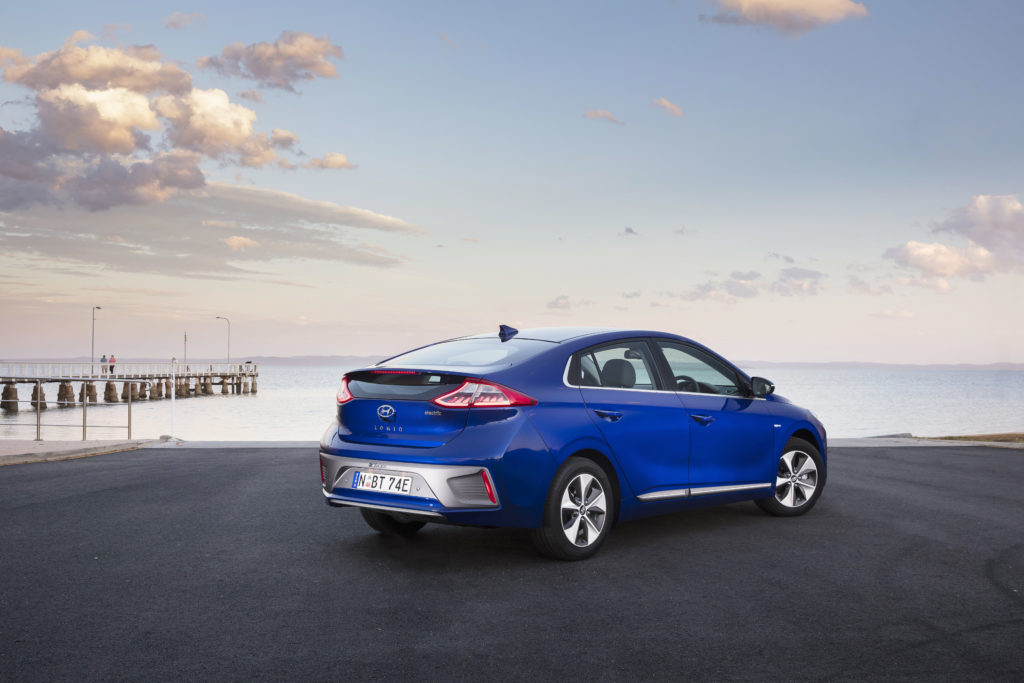
Service intervals are 12 months/15,000km for all Ioniqs. The BEV costs just $160 per service out to 60 months.
By the way, there are other cheaper hybrid Ioniqs available, including the Hybrid and Plug-in Hybrid (PHEV).
Inside
If making the transition from petrol to electric freaks you out a little , then slipping into the cabin of the Ioniq will be reassuringly familiar. Apart from the ‘D’ button for the single speed reduction gear (yes there is also an R and P!) it’s all pretty familiar.
In fact, if anything, it’s a tad disappointing. The plastics are predominantly hard to touch and trims uninspiring, even if some are commendably made from recycled sugar cane.
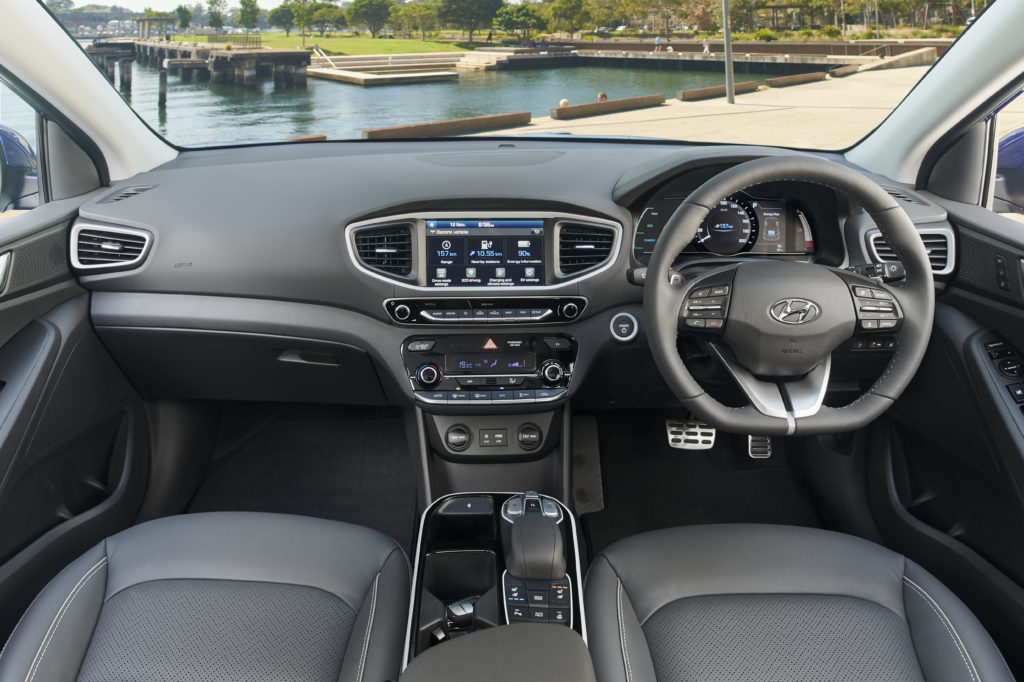
Continuing the ho-hum theme, the steering wheel is manually reach and rake adjustable. but it does have a sporty flat-bottom. Woo-hoo.
The instrument panel has a power meter rather than a tacho, while the small touchscreen is embedded in the dashboard rather than sitting atop it. The screen can’t be split to show both sat-nav maps and charging info at the same time, although you can always have the current driving range on display.
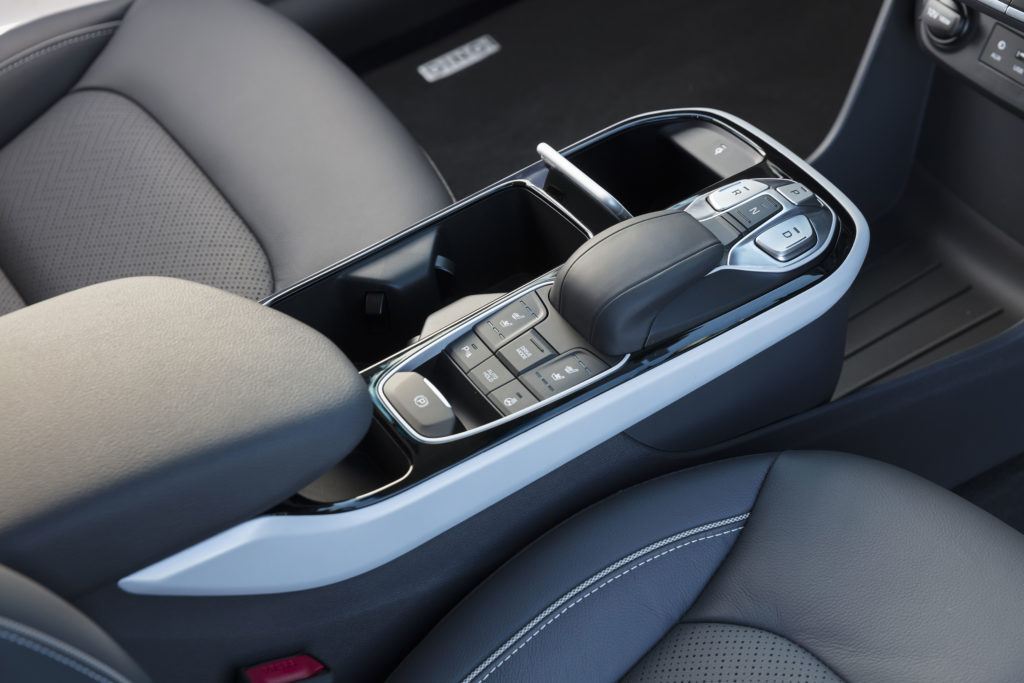
The Ioniq’s swoopy shape cheats the wind but also robs the rear passengers of headroom. Knee room isn’t sensational for adults back there either. They do get air-con vents, but miss out on temperature or fan speed adjustment.
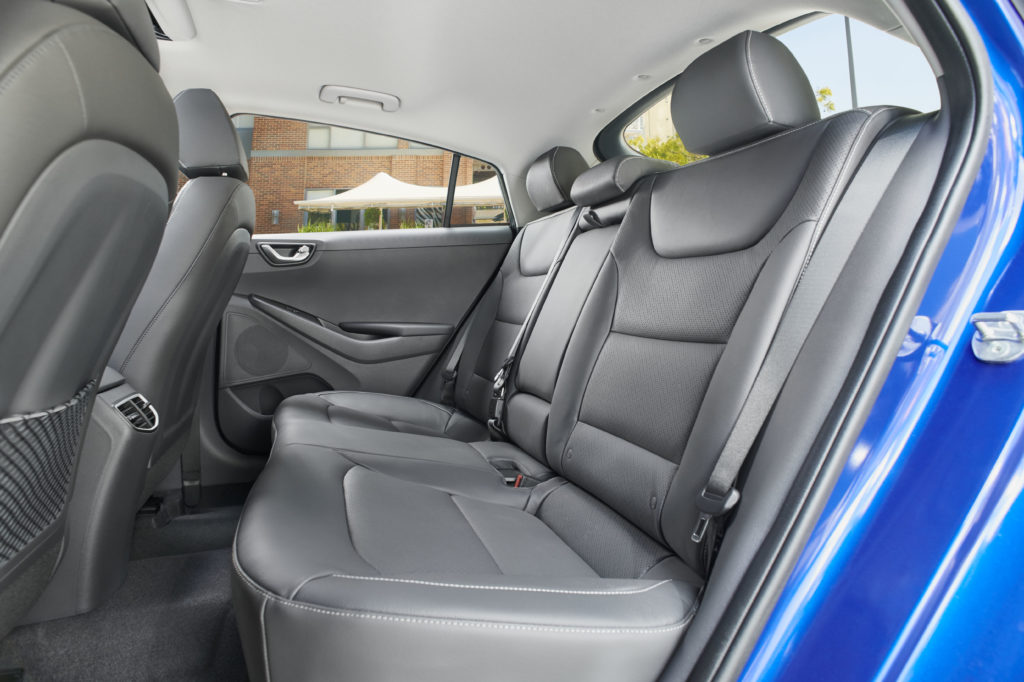
Storage is ok in-cabin. The lidded centre bin is sizable but the door pockets are small, while the boot’s 350 litre capacity is about the same as similar-sized hatchbacks like the Mazda3. But the battery pack under the floor ensures there’s no room for a spare tyre.
Performance and efficiency
The Ioniq Premium is powered by an 88kW/295Nm permanent magnet synchronous motor fuelled by a 28kWh Li-ion polymer battery.
Hyundai claims a 230km real-world range, or 280km according to Australian Design Rule testing.
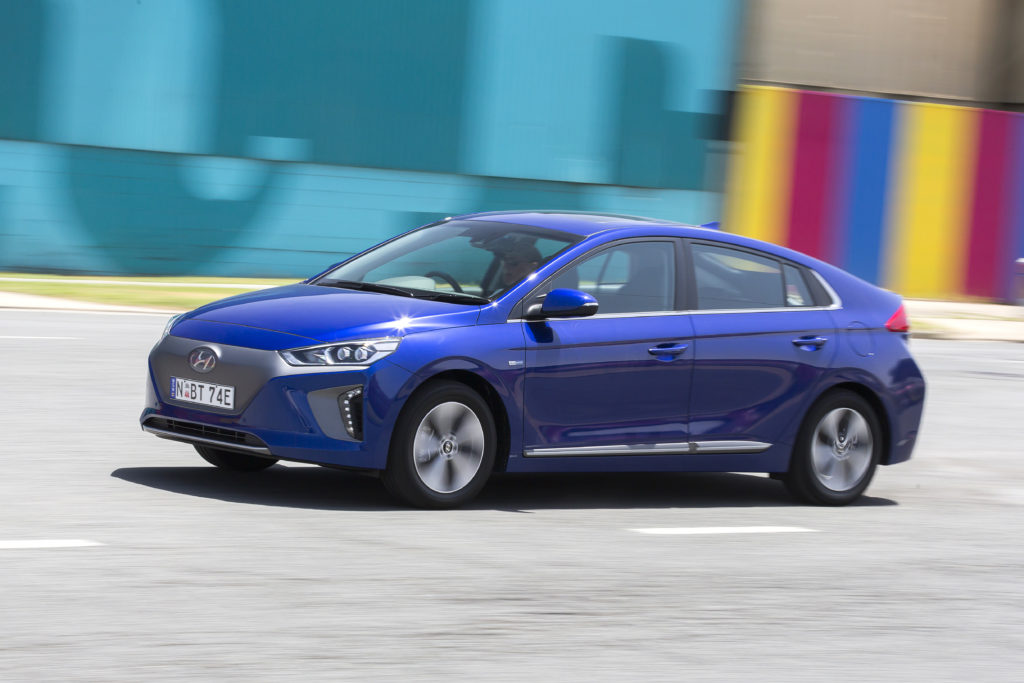
That real-world claim in based on local driving by Hyundai over nine recharging cycles, and was backed up by our own driving experience.
It’s nothing special these days, reflecting the way battery tech has progressed over the last few years. The more recent Hyundai Kona EV has a range beyond 400km, but it also costs $60,000.
It’s worth noting there are some tricks to extending the range. You can nominate Eco, Normal or Sport mode and the more conservative you are the more regeneration via braking you get. You can also apply various levels of brake regeneration via the flappy paddles on the steering wheel.
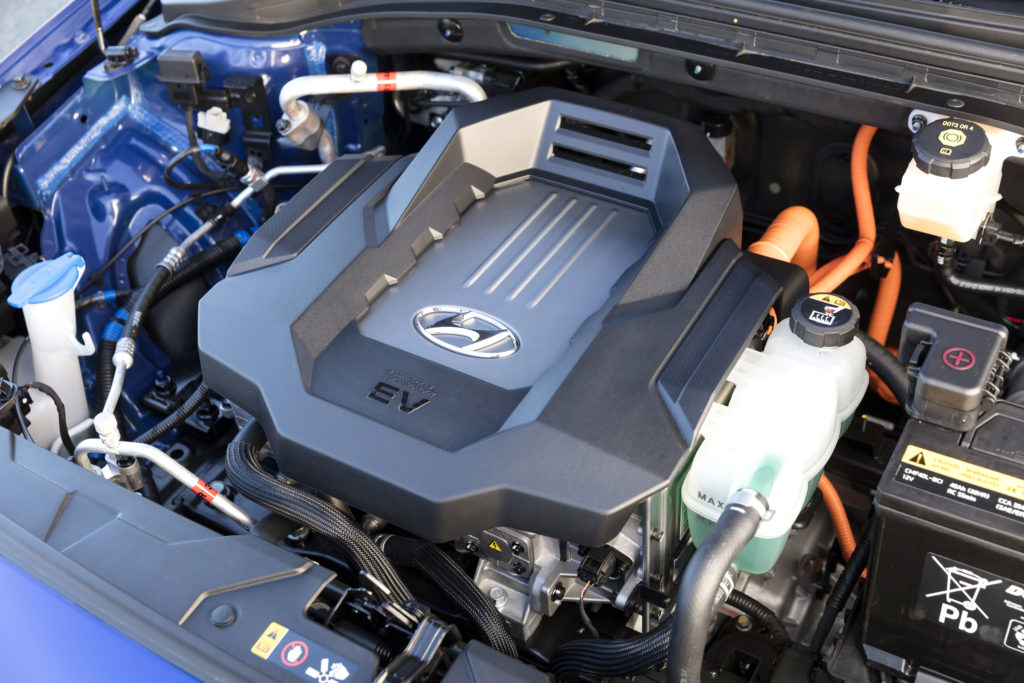
Flip to acceleration and the electric motor’s instant torque characteristic delivers terrific step-off and mid-range go, making the Ioniq perfect for green-light grands prix and the cut and thrust of city traffic.
By the way, Hyundai has announced an update for the Ioniq that will include a 38.3kWh battery and improve its claimed real-world range close to 300km. No pricing has been announced as yet. Keep an eye out for our first test when it arrives.
Charging
The Ioniq can plug-in to a standard household socket using the supplied In-Cable Control Box (ICCB), as well as into an AC charging station, or a specialised 100kW DC fast-charging station. The latter can charge the battery up to 80 percent in as little as 23 minutes (or in 30 minutes when connected to a 50kW fast charging station).
AC charging is limited to 6.6kW and can charge the high-voltage battery in as little as four hours 25 minutes when connected to a charging station of equal or higher capacity.
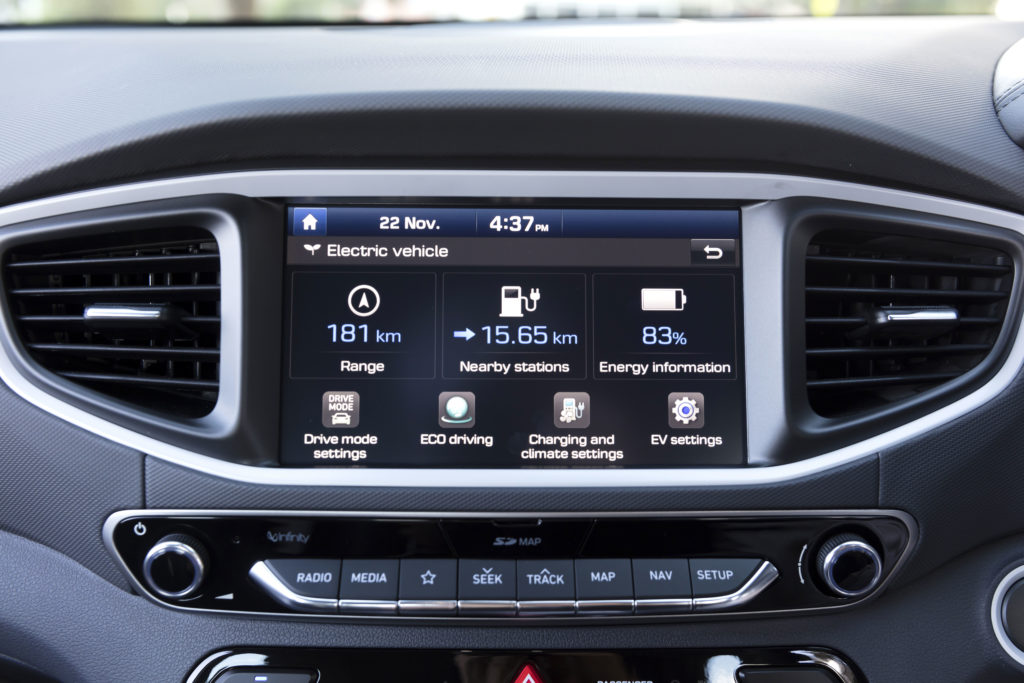
The installation of a personal charging station for an additional $1950 allows a full overnight charge at home. Jet Charge is Hyundai’s partner for domestic charging stations.
To capitalise on low-cost off-peak electricity, the on-board charger features a built-in charge scheduling function, which is accessed via the in-dash touchscreen.
When a charging station is not available, the ICCB allows the battery to be charged via any household 240V AC outlet. It takes approximately 12 hours to reach full charge from zero when plugged in using the ICCB.
The Ioniq uses a Type 2 charging connector for AC charging and the CCS Combo 2 for DC charging. You can also plug it into a standard household powerpoint for 2.4kW of charging, which will take about 12 hours.
Ride and handling
Rolling on locally-tuned MacPherson strut front and torsion beam rear suspension, the Ioniq is a neat and tidy drive with good body control and reliable handling. The letdown is the remote and lifeless electric-assist steering.
Naturally, being electric, the Ioniq is a quiet drive, although – as is is usual with BEVs – tyre and wind roar fills in for some of the absent engine noise.
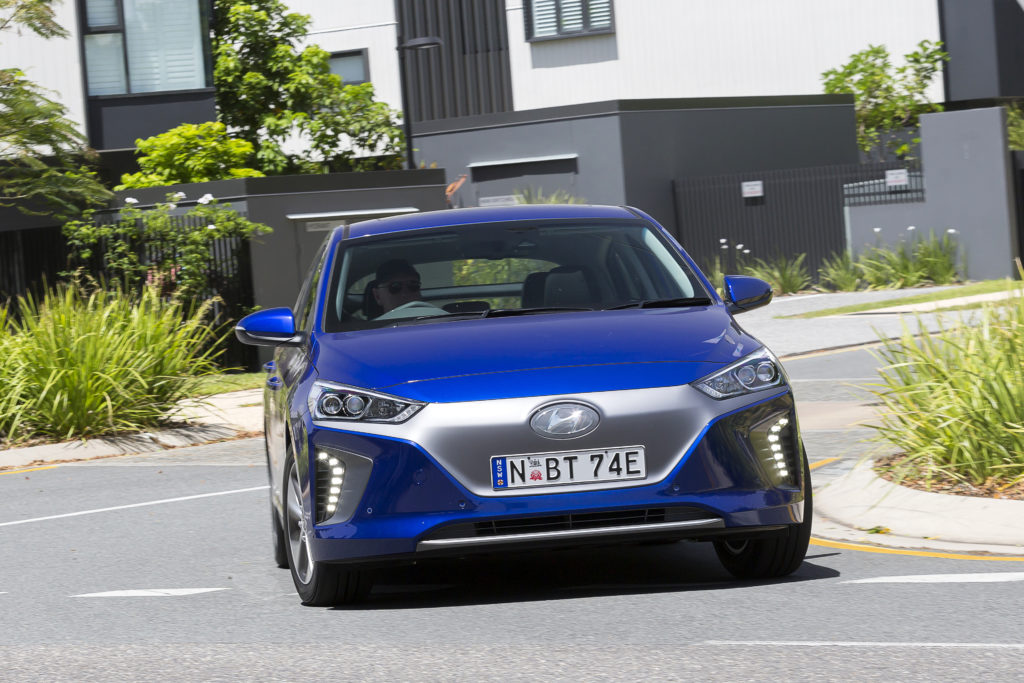
Party tricks
The Ioniq’s brake regeneration flappy paddles act and look just like gearshift paddles. Set regeneration at 0, 1, 2 or 3 and the higher the number the more regeneration and drag. You can even use engine braking to slow the Ioniq down … without actually having an engine.
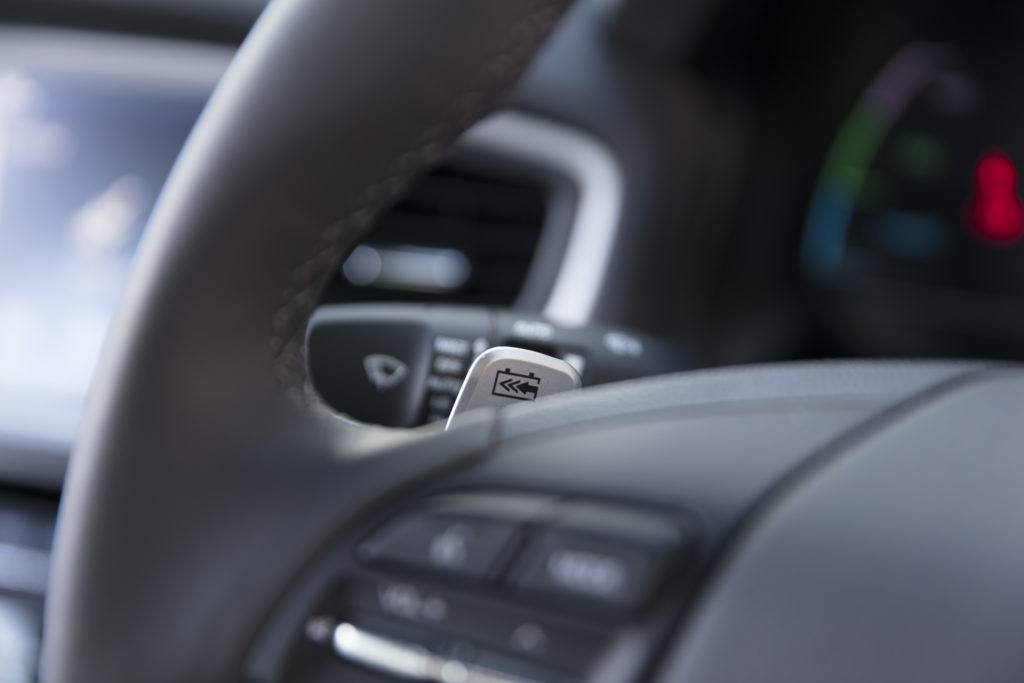
It’s a fun challenge to see how rarely you can apply the brake pedal and to add charge and range using the paddles on a downhill run … yeah, yeah I know, I have a boring life.
All Ioniqs come with Hyundai Auto Link which downloads vehicle data such as tyre pressure monitoring, driving history and parking management via a connected smartphone. It even allows driving efficiency comparisons between Ioniq owners. Auto Link Premium adds remote start and access to doors, climate control and defroster.
Safety
Standard Ioniq safety equipment includes seven airbags, a suite of driver assist systems including blind sport detection, lane keep assist and rear cross traffic alert as well as AEB; a reversing camera. Ioniq Premium adds front park assist and HID bi-xenon headlights.
The Ioniq comes with a 2016 ANCAP five-star safety rating.
Verdict
In terms of driving and the performance the Ioniq Electric is not groundbreaking. But it is well priced for a BEV and that does make it important.
Like we said at the start, there is nothing other-worldly or freaky here.
It’s a soft, comfy, easy way to make the transition from petrol to electricity.
HYUNDAI IONIQ ELECTRIC SPECIFICATIONS
Price: $48,990 (plus dealer and on-road costs)
Warranty: 5 years, unlimited km
Battery warranty: 8 years, 160,000km (guarantee of 70% of original capacity)
EV type: pure EV
Motor/s: Permanent magnet asynchronous electric, front-wheel drive
Power/torque: 88kW/295Nm
Transmission: Single speed reduction gear
Fuel use: Only for PHEVs
Electricity use: 11.5kWh/100km (Greenvehicleguide.gov.au)
Charger types: Type 2, CCS Combo
Battery capacity: 28kWh
Claimed range: 280km (Greenvehicleguide.gov.au)
Maximum charging power AC/DC: 6.6kW/100kW
0-100km/h: NA
Top speed: NA

